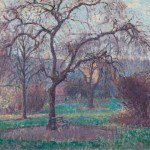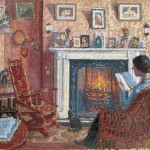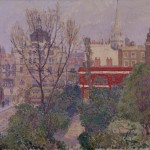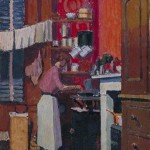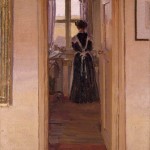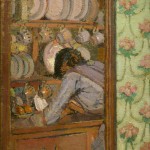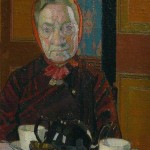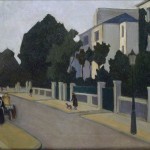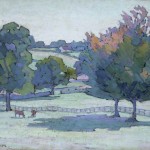EXPLORING BRITISH PAINTING 1880-1920 Week 3
Once the restrictive mould of the Royal Academy had been broken – or at least cracked – the flood-gates were opened. An important aspect of the new approach fostered by the Slade School and the New English Art Club was that the artist was now in charge. Severing the traditional ties meant, as it had in France, being cut off from accepted patronage and support and becoming outcasts, often impecunious.
The setting was not one of palatial mansions, social status, powerful patrons, lucrative contracts with dealers, and high-profile appearances at the annual Royal Academy Exhibition. The setting for these ‘revolutionaries’ was in modest London terrace houses, in small gatherings of artists, in ad-hoc exhibitions in out-of-the-way places.
As in Paris groupings of artists changed frequently and enthusiasms could lead to disagreements. A potent figure in this heated period was Walter Sickert whose work is well represented in the Ashmolean through the bequest of the avid Sickert collectors Morton and Ethel Sands. Whilst Sickert appears to have been an unsettling figure causing many ructions he nevertheless spearheaded the creative upheavals that mark this period. Quickly disillusioned with what he perceived as the conservatism of the New English Art Club (NEAC) he formed, with Frank Rutter (an artist, art critic, and art curator), the Allied Artists Association (AIA) in 1908 with the aim to exhibit and encourage the work of progressive artists.
From the AIA erupted, in 1911, the Camden Town Group – a name taken from its initial location in Sickert’s studio in that area of London. Soon after, in 1913, the Camden Town Group merged with yet another manifestation, the London Group.
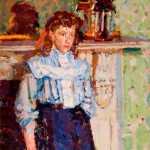
- Harold Gilman : Interior with Girl by a Mantlepiece : 1917 : Stoke on Trent
Not happy with this amalgamation another group formed called the Cumberland Market Group so named because artists like Gilman and Ginner met in Robert Bevan’s Cumberland Market studio.
Our aim in this session was to discern in the Ashmolean pictures the strands and emphases, similar and dissimilar, in the work of the artists there exhibited. Noting that whilst avant-garde French art, from C Pissarro and Manet through Monet and Gauguin to Toulouse-Lautrec and Degas, was certainly a powerful influence British artists began to create a distinctive ‘British’ approach.
David Addison. October 2012.
Reminder for Ashmolean Art Appreciation Group – no meeting on 6th November, resume on 13th November.

